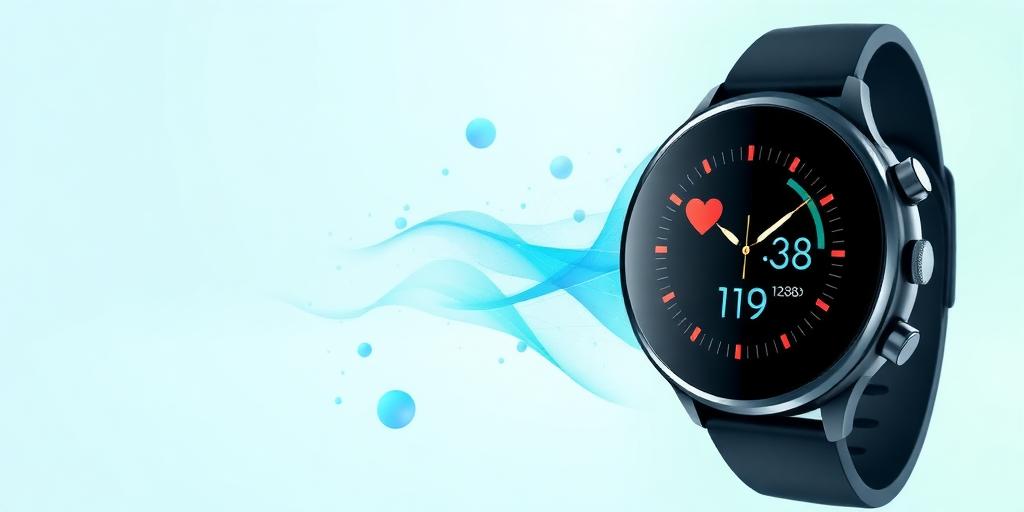The Transformative Power of Wearable Technology in Health and Wellness
Wearable technology, once a niche concept, has rapidly evolved into a pervasive tool integral to modern life. From smartwatches to fitness bands, these devices are no longer mere gadgets but sophisticated platforms providing real-time data that significantly impacts our understanding and management of personal health and wellness. This widespread adoption underscores the immense potential these technologies hold for revolutionizing how individuals monitor, maintain, and improve their well-being.
Real-time Data and Personal Insights
One of the most compelling aspects of wearable technology is its capacity to deliver continuous, real-time physiological data. Traditional health check-ups offer periodic snapshots; wearables provide a dynamic, ongoing narrative of an individual's health metrics. This continuous monitoring enables users to gain unprecedented insights into various aspects of their health, including:
- Heart Rate Variability: Beyond simple heart rate, advanced wearables can track heart rate variability, offering insights into stress levels and recovery.
- Sleep Architecture: Detailed analysis of sleep stages (REM, light, deep) helps users understand their sleep quality and identify potential disruptions.
- Activity Levels: Comprehensive tracking of steps, calories burned, and active minutes encourages consistent physical activity.
- Blood Oxygen Levels: Many devices now monitor SpO2, which can indicate respiratory efficiency or sleep apnea.
These data points empower individuals to move beyond reactive health management to a proactive approach, fostering greater self-awareness and enabling timely adjustments to lifestyle choices.
Empowering Proactive Health Management
The actionable insights derived from wearable devices translate directly into improved proactive health management. Users are no longer relying solely on periodic medical assessments but are equipped with personalized data to make informed decisions daily. For instance, consistent monitoring of activity levels can motivate individuals to meet fitness goals, while sleep pattern analysis can lead to behavioral changes that improve restorative sleep. Furthermore, stress monitoring features, often coupled with guided breathing exercises, provide tools for immediate stress reduction. This empowerment fosters a culture of self-care and continuous improvement in personal health tracking devices.
Revolutionizing Chronic Disease Management
Beyond general wellness, wearable technology holds significant promise in the realm of chronic disease management. For individuals managing conditions such as diabetes, hypertension, or cardiovascular diseases, continuous monitoring can be life-changing. Devices capable of tracking glucose levels, blood pressure, or ECG readings can provide critical data to both patients and healthcare providers. This facilitates:
- Remote Monitoring: Healthcare professionals can remotely track patient vital signs, enabling timely interventions and reducing the need for frequent in-person visits.
- Early Anomaly Detection: Subtle changes in physiological data, often undetectable without continuous monitoring, can signal emerging health issues, allowing for earlier diagnosis and treatment.
- Medication Adherence: Some wearables can integrate with medication reminders, improving adherence to prescribed regimens.
The integration of wearable tech for health improvement into clinical pathways is a key aspect of the future of health wearables.
The Future Landscape: Integration and Predictive Analytics
The trajectory of wearable technology in health and wellness points towards even more sophisticated applications. Future developments are likely to focus on seamless integration with broader healthcare ecosystems, leveraging artificial intelligence (AI) and machine learning to move from data collection to predictive analytics. Imagine devices that not only detect an anomaly but predict the likelihood of a health event before it occurs, prompting preventative measures. The convergence of wearable technology, AI, and telehealth platforms promises a future where personalized, preventative healthcare is accessible to a broader population, further solidifying the benefits of wearable devices.
Challenges and Considerations
While the potential is vast, it is crucial to acknowledge challenges such as data privacy, accuracy of consumer-grade devices compared to medical-grade equipment, and equitable access. Addressing these issues through robust regulation, continued technological refinement, and inclusive design will be paramount to realizing the full potential of wearable technology for chronic disease management and overall wellness.
Conclusion
Wearable technology represents a paradigm shift in health and wellness. By providing unprecedented access to personal health data, empowering proactive self-management, and offering transformative tools for chronic disease oversight, these devices are reshaping the landscape of modern healthcare. As the technology continues to evolve, its role in fostering healthier lives and supporting more efficient healthcare systems will undoubtedly expand, making it an indispensable component of our collective well-being strategy.









